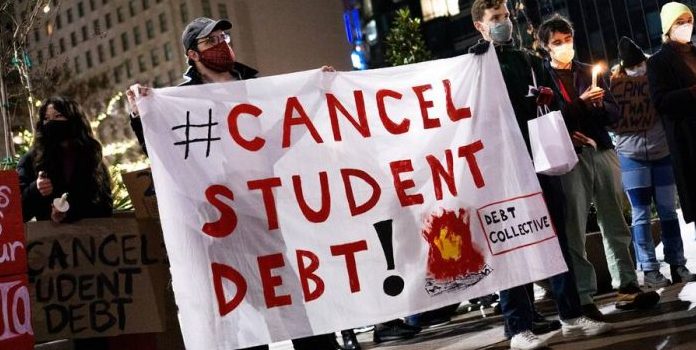(By Peter Jacobsen, FEE) Earlier this month, the Supreme Court ruled against the Biden administration’s student loan forgiveness proposal which would have forgiven $10,000-$20,000 of student loans per borrower. But the fight for student loan forgiveness isn’t going anywhere.
In a previous article for FEE, I highlighted how student loan forgiveness has already been happening and started under president Trump due to the freeze on interest accumulation. Although this may not be as visible as a $10,000 lower balance, frozen interest means the real cost of taking a loan out became smaller than the initial terms suggested.
This highlights a simple truth about student loan forgiveness—the Biden administration has already and can continue to forgive student loans in spite of this ruling. In fact, they already have plans to do so.
Almost immediately after the Supreme Court decision was announced, the Biden administration announced their response.
Perhaps the most important announcement by the Department of Education was the introduction of a new student loan repayment plan—the SAVE plan.
The SAVE plan is a modification of the current REPAYE plan. Both of these plans are considered income-driven-repayment plans.
IDR plans are complicated, but essentially they limit the size of a borrowers monthly payment based on income. The payment calculations depend on the borrower’s income relative to the poverty line.
Under the new guidelines by the Department of Education, someone making 225% of he federal poverty rate will now have their income completely protected from payments according to Fox Business. That means borrowers earning $32,805 or a family of four with income of $67,500 will be required to make payments of $0.
Even borrowers who make more than those amounts who qualify for a SAVE plan will see lower payments.
But wait, won’t low or zero dollar payments mean the interest on these loans will grow out of control? Nope. The administration is capping interest rates to make sure loan balances don’t grow. So how much do we expect someone to pay on a student loan with a required payment of $0 and no interest accumulation? It’s not hard to see that this is just shadow forgiveness.
It doesn’t end here either. IDR plans already offered loan forgiveness to borrowers who made payments for 20-25 years. So borrowers who have a small payment under Biden’s new SAVE plan will see their balances disappear eventually based on already existing rules.
So, if a borrower qualifies for a $100 monthly payment, and they pay that over 20 years, that’s a total repayment of $24,000 (not even including the fact that the present value is lower). So if someone has a $50,000 student loan, that means they got forgiveness of $26,000. That dwarfs Biden’s $10,000 forgiveness promise struck down by courts.
Not only that, borrowers can get even more forgiveness if they take jobs in the government or non-profits. The Public Service Loan Forgiveness program grants forgiveness after just 10 years of payments to those who work for qualifying public and non-profit jobs. Using the previous example, that would increase forgiveness to $38,000 of the $50,000
The Cost of Our Student Loan System
It would be nice if the cost of this convoluted shadow forgiveness program was limited to the dollar value of the forgiveness (which ultimately is borne by taxpayers). But that isn’t the full cost.
Perhaps an even worse aspect of this system, is it distorts the incentives of future generations in making career decisions. The current system, exacerbated by the Biden Administration’s new plans encourages and rewards those who take out massive student loans to pursue jobs which consumers do not value highly.
Even more damaging, the new repayment program exacerbates the use of PSLF which encourages workers to avoid value creating private sector jobs, and, instead, pursue wealth-extracting public sector jobs.
What world-improving things would have been created had individuals been left to become educated at their own expense? Those forgone benefits will go largely unseen a la Bastiat.
On the other hand, many will experience direct benefits from these programs which are very visible, making the programs very hard to end.
So while some have celebrated the Supreme Court decision as defeating loan forgiveness once and for all, I’m not nearly so optimistic. So long as the Department of Education has administrative control over the country’s student loan system, loan forgiveness is just a few bureaucratic tweaks away.
At this point, the only way the Supreme Court would be able to do anything about it is if they declared the Department of Education itself unconstitutional. But I doubt this will ever happen. Unfortunately, the administrative state seems to always be forgiven.

